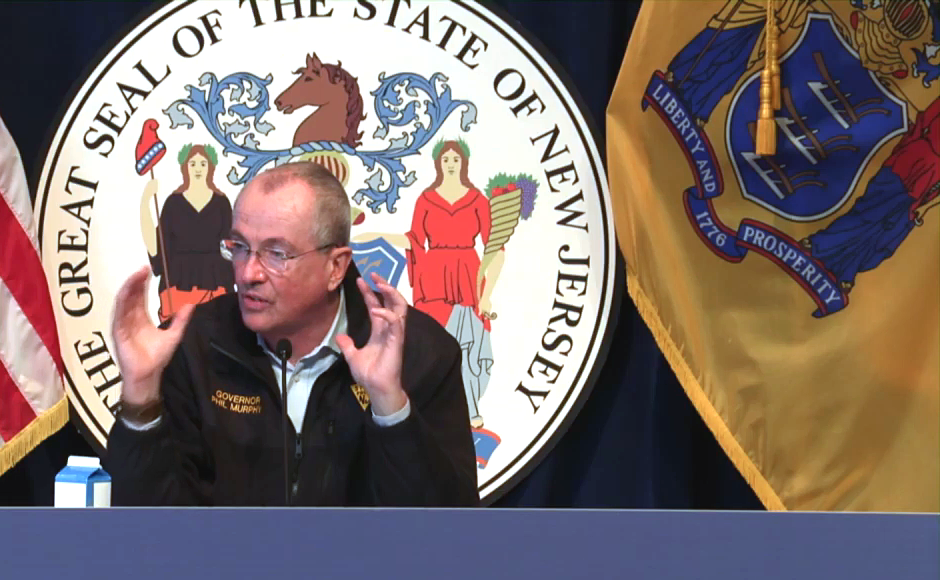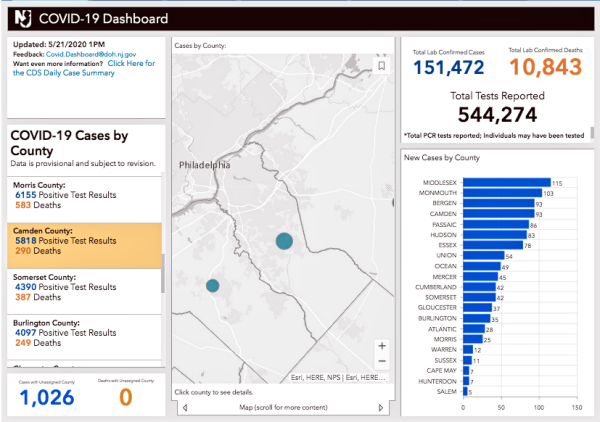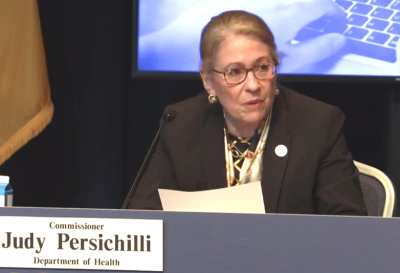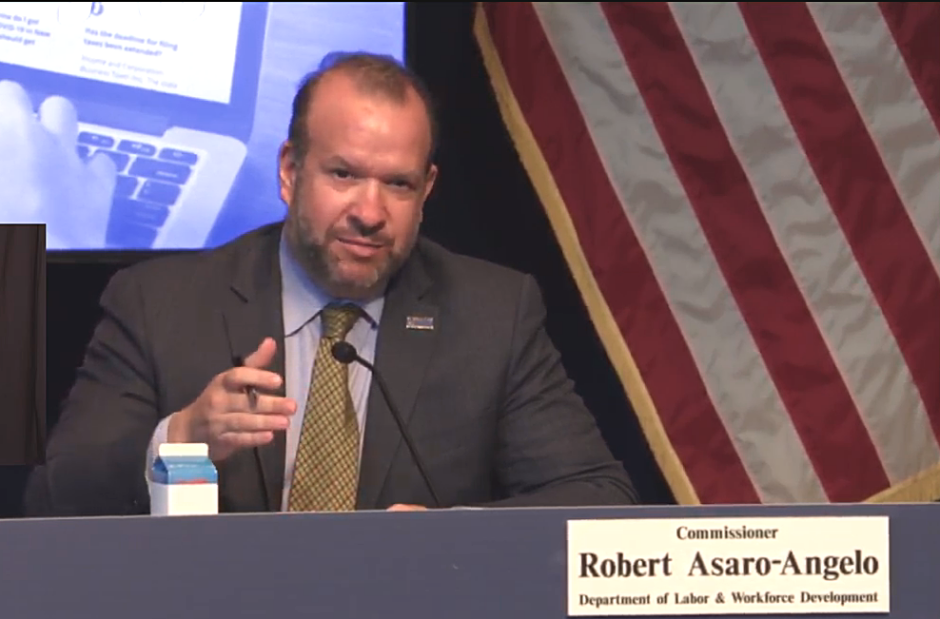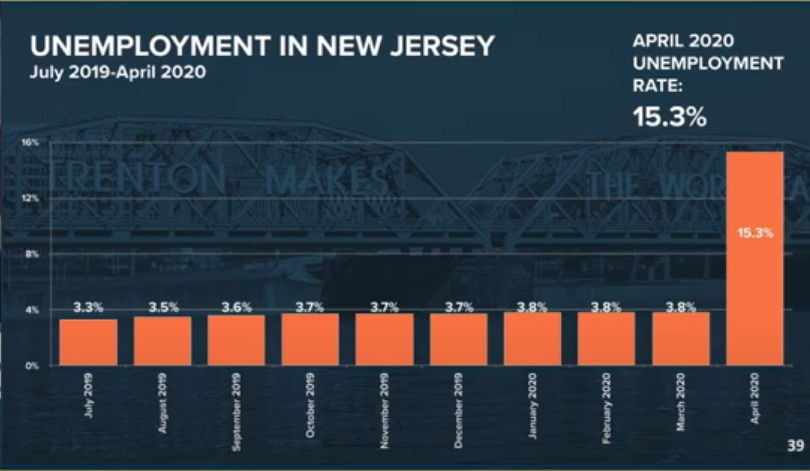More than 757,000 New Jersey residents lost their jobs in April 2020, and the state has paid out $3.4 billion to date, said labor commissioner Rob Asaro-Angelo.
By Matt Skoufalos | May 21, 2020
Another 1,304 New Jersey residents have tested positive for novel coronavirus (COVID-19), bringing the statewide total to 151,472 cases, Governor Phil Murphy reported Thursday.
Sadly, 98 more residents have perished from complications related to the virus, bringing the statewide death toll to 10,843 lives lost during the pandemic.
Throughout New Jersey, 3,208 people are hospitalized with a case of COVID-19, or while awaiting confirmation of their symptoms.
Of those 3,208 patients, 896 are in intensive or critical care; 700 of ICU and critical-care patients (78 percent) are on ventilators.
“I do not recall the last day we’ve had fewer than 900 patients in the ICUs,” Murphy said. “It’s been several weeks.”
In the past 24 hours, 71 New Jersey hospitals admitted 143 new COVID-19 patients and discharged 286 others, either to a lower-acuity care setting or to their homes.
“We continue to see the right numbers from our hospitals, and this means the overall stresses on our healthcare system are lessening,” the governor said.
Across New Jersey, 530 long-term care (LTC) centers have reported at least one case of COVID-19, and account for 28,876 infected people statewide—patients and staff—or 19 percent of total cases.
That includes 19,847 residents and 9,029 staffers sickened by the virus, and 4,502 lab-confirmed resident deaths (42 percent of the statewide total).
Of 658 veterans residing in a state-run home, 381 residents have tested positive for the virus, and 143 have died from complications related to the virus.
Six veterans home residents are hospitalized with COVID-19 and 91 have recovered from the virus.
At state-run psychiatric facilities, 209 of 1,230 patients and 471 staff members have tested positive for COVID-19.
Seven staffers and 13 patients have died from complications related to the virus.
Forty-six patients are presently receiving care at one of the state’s field medical stations, which have served 458 people in total.
Three more New Jersey children have been diagnosed with multisystem pediatric inflammatory syndrome, also described as Kawasaki Syndrome, for a total of 19. Aged 1 to 18, 14 of the 19 have tested positive for COVID-19; six remain hospitalized, said New Jersey Health Commissioner Judy Persichilli.
COVID-19 cases are doubling at least every 30 days throughout all of New Jersey save Cumberland County, which stands at a 20-day rate, and Hunterdon County, where cases are doubling every 23 days.
The statewide average of COVID-19 spot positivity testing has held at 18 percent since May 16. Per capita regional hospitalizations continue to trend along comparable levels across North, Central, and South Jersey.
NJ unemployment, benefits payments at historic highs
Since the beginning of the pandemic, 1.1 million New Jersey residents have filed for unemployment benefits, said New Jersey Commissioner of Labor and Workforce Development Rob Asaro-Angelo.
New Jersey lost 757,700 jobs in April 2020, and unemployment now stands at a historic high of 15.3 percent.
Only 10 months ago, the state had reported its lowest unemployment rate (3.3 percent) since record-keeping began in 1976, Asaro-Angelo said.
The state has paid out $3.4 billion to residents during the pandemic, including $2 billion in federal assistance, and can now begin processing federal Pandemic Emergency Unemployment Compensation (PEUC) for residents who’ve exhausted their benefits.
“Many of these workers were unemployed before the pandemic began and this situation has obviously made their job search exponentially more difficult,” Asaro-Angelo said.
Some 70,000 people may be eligible for 13 more weeks of PEUC aid, he said, as well as any back pay for weeks in which they were eligible for benefits from March 28 to December 31. Every qualifying claim will receive an additional $600 per week in PEUC through July 25.
Benefits only stop for two reasons, Asaro-Angelo said: either recipients no longer qualify for them, or they’ve made themselves ineligible through their responses to the federal certification questions.
“One wrong click is all it takes to see a pause in these much-needed benefits,” the commissioner said, urging residents to “read the [state’s answer] guide before certifying to avoid delays.”
By mid-June, the department is expected to be processing more than 1 million benefits certifications a week, Asaro-Angelo said.
Scammers are also working to separate beneficiaries from their cash, and the U.S. Department of Labor has warned residents of anyone who offers to help file their unemployment claims for them.
“You do not need to pay anyone to file or qualify for your benefits,” the notice said, adding the “the personal information the scammers collect may be used to commit identity theft to file fraudulent unemployment insurance claims.”
Victims have been targeted by phone, online, and even in person.

